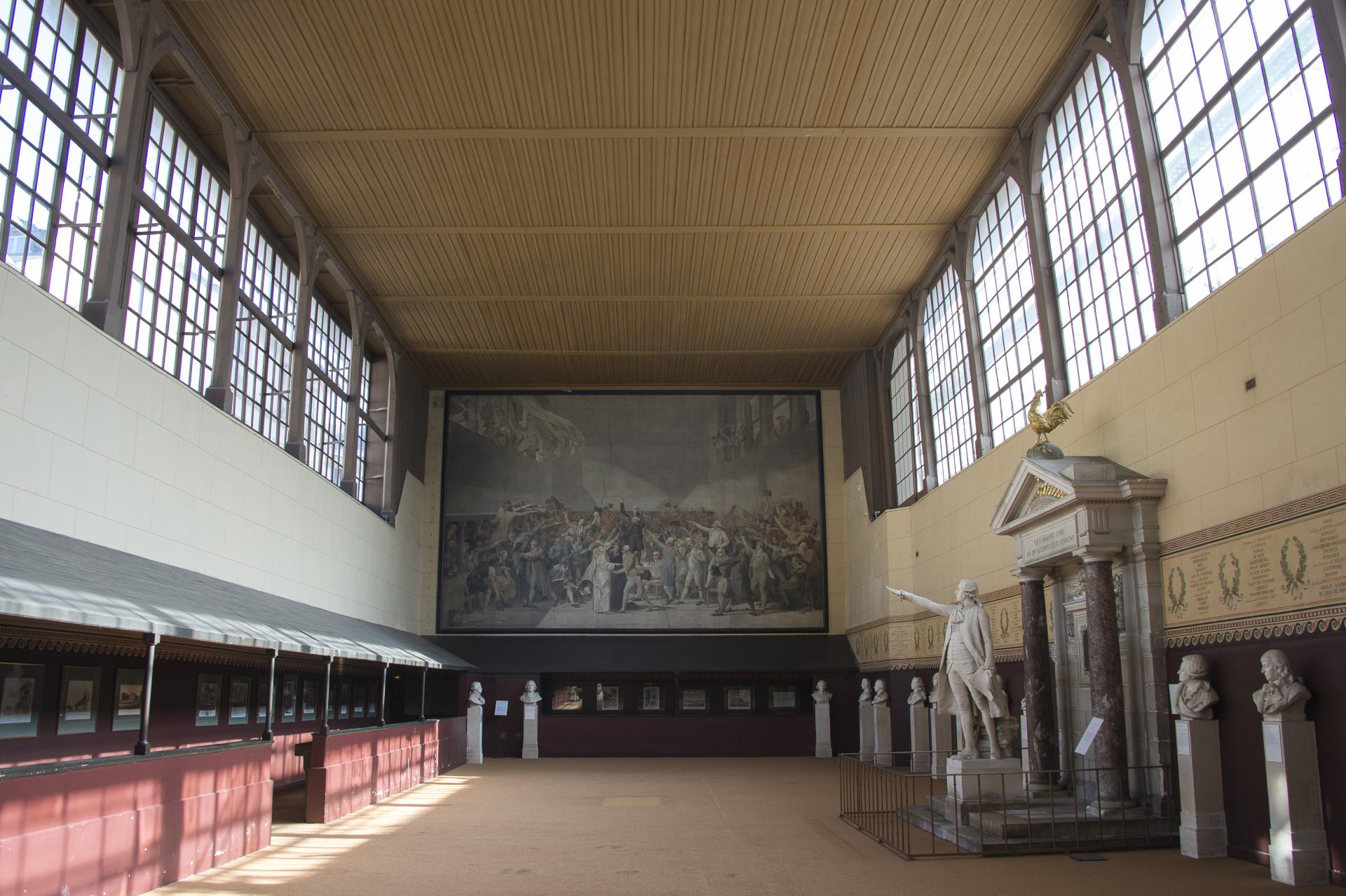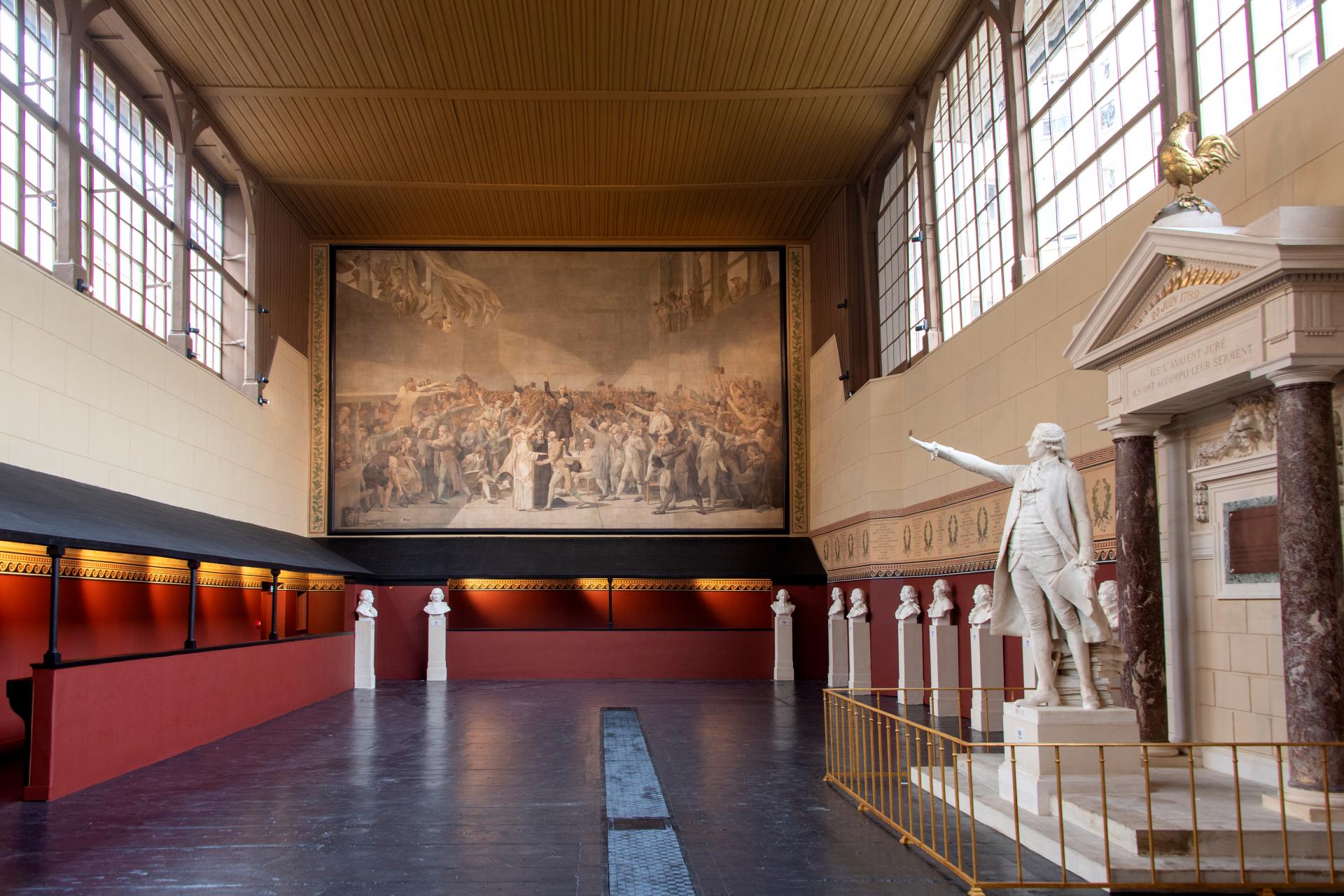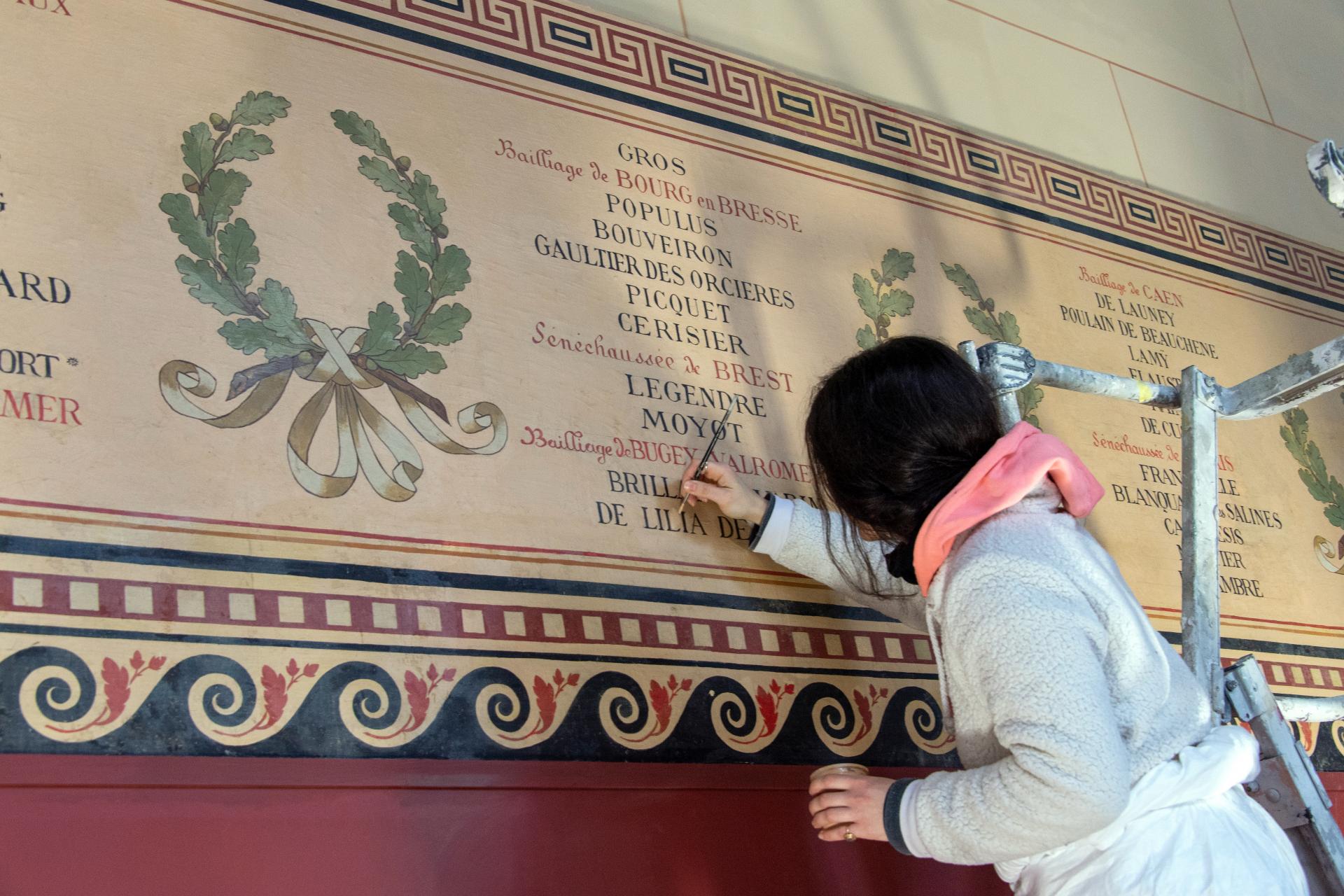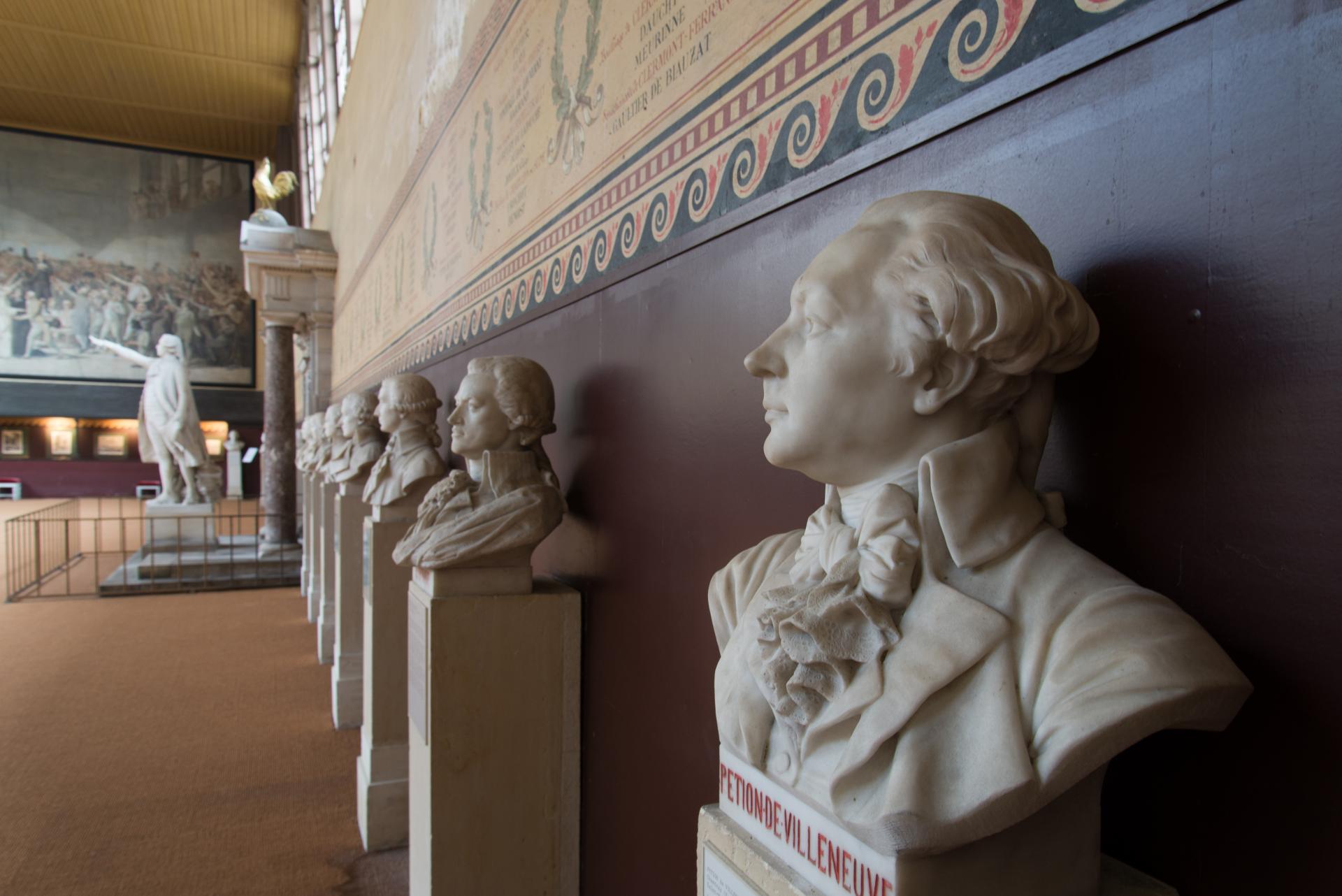The Royal Tennis Court, located in the Saint-Louis district at the foot of the Palace of Versailles, made French history on 20 June 1789. It played a key role in the foundation of French democracy, but is now in need of substantial restoration work.

Restoration of the Royal Tennis Court
The Place
On 20 June 1789, the Royal Tennis Court became a symbol of the French Revolution. The deputies of the Third Estate met there at the time of the Estates General. Painter Jacques-Louis David immortalised this founding scene in the so-called Oath of the Royal Tennis Court, a painting he left unfinished, and which can now be found in the Palace of Versailles attics.

Royal Tennis Court before restoration
© château de Versailles / Didier Saulnier

Royal Tennis Court after restoration
© château de Versailles / Didier Saulnier
Formerly used for sport (“jeu de paume” is an older version of modern-day tennis), the room became a symbol dedicated to remembering the abolition of the monarchy. It soon fell into disuse, however, and became a national asset in 1793. In the absence of any maintenance, it was closed to the public five years later. In 1848 the room was listed as a national monument, and was then used for playing again under the French Second Empire.

Royal Tennis Court before restoration
© château de Versailles / Didier Saulnier

Royal Tennis Court after restoration
© château de Versailles / Didier Saulnier
As the centenary of the French Revolution approached, restoration work began and the site was converted into a museum of the French Revolution, which was inaugurated on 20 June 1883 in the presence of Jules Ferry. After some restoration work in the run-up to the bicentenary celebration of the French Revolution (1989), the Royal Tennis Court has been open to the public.
Historical figures
restoration work
Substantial restoration work is planned for 2021. The restoration project plans to return the room to its 1883 state; the year it was transformed into a museum of the French Revolution. The black cement floor will thus be restored, and the foundations under the decorative frieze and the low wall will regain their Pompeian red colour, in line with the project of the architect Edmond Guillaume (1826-1894).

Royal Tennis Court during restoration
© château de Versailles / Didier Saulnier
All the painted decorations, as well as the Merson painting, will be restored. The roof will be overhauled, its framework repaired, the front facade re-coated, and the large window frames revised. Toilet facilities, which will also be accessible for people with reduced mobility, will be built in the south-east corner of the garden to improve conditions for the public.

Royal Tennis Court before restoration
© château de Versailles / Didier Saulnier

Royal Tennis Court after restoration
© château de Versailles / Didier Saulnier
original podcast
To mark the occasion of the restoration of the Royal Tennis Court and Luc-Olivier’s painting based on the original by Jacques-Louis David, the Palace of Versailles has published an original podcast which retraces the history of the historical work. In 1883, as the centenary of the French Revolution approached, painter Luc-Olivier Merson was chosen by the government of Jules Ferry to restore David’s unfinished painting. Although nothing predestined him to follow in the footsteps of the ‘master’ David, Merson thus also went down in Royal Tennis history…
Guided tour
engagement
Funding for the restoration work has received support from elected members - both former and current - of the National Assembly, as well as from individual patrons. This unique support highlights the historic link between the meeting of the representatives in the Royal Tennis Court on 20 June 1789, and the engagement of the representatives of the Fifth Republic in 2021.
This restoration project has benefited from the France Recovery plan.





